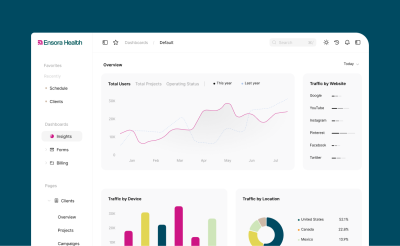Top ICD-10, DSM, & CPT codes used by therapists

Insurance billing is no easy task. It is made even more confusing by the vast amount of terminology (and acronyms) used for even the most simple of tasks. There are thousands of codes you have to juggle — CPT, ICD-10 and ICD-11, and DSM-5, just for starters. It is easy to choose the wrong code but it can be a costly mistake. In this post, we’re breaking down and defining what ICD, DSM, and CPT mean and how you, as a therapist, use them every day.
ICD and DSM and CPT, oh my!
You’ve probably seen or at least, heard of each of these terms before. But what do they actually mean?
CPT stands for Current Procedural Terminology. This is a standardized set of codes published and maintained by the American Medical Association (AMA). The CPT codes for psychiatry, psychology, and behavioral health usually get revised every year. Some years bring extensive changes while others only have light updates, so it’s essential to keep up. CPT codes describe the action taken or the treatment provided to clients. These five-digit codes are used to quantify any treatment a client relieves whether that be a trip to the ER or a therapy session.
CPT codes are essential for billing. Whether you bill directly to insurance companies or you provide your clients with superbills, having the correct CPT codes is necessary if you want to get paid in full and avoid an insurance audit. CPT codes and add on codes are used to convey the exact service you provided to your client and from there they eventually determine how much you are paid.
Using the wrong CPT code can be detrimental for your pay cycle in specific and for the health of your practice in general. Two of the most common mistakes when it comes to CPT codes and medical billing is undercoding and upcoding:
- Undercoding: This is when you use a CPT code that represents a lower-priced treatment or a less severe diagnosis. While this can be done by mistake, undercoding is often intentional. A provider intentionally leaves out a service rendered as a way to save money for the client. Providers may also undercode to avoid auditing from an insurance company. Regardless of the reason it is done, undercoding is illegal.
- Upcoding: This is when you use a CPT code that represents a higher-priced treatment or a more severe diagnosis. Sometimes this can be done to receive higher reimbursement. Though, upcoding is illegal (and unethical), it is not always done with malicious intent. Upcoding often results from having an untrained staff member (remember even if this was an employee error if you get audited by an insurance company this blame falls on you so make sure to hire properly trained staff!).
Most common CPT codes used by therapists
There are over 8,000 CPT codes out there. The good news is only 24 of these codes are designated for psychotherapy. The even better news is that you, as a therapist, will likely only use about 8 of these regularly. The most common CPT codes used by therapists are:
- 90791 – Psychiatric Diagnostic Evaluation
- 90792 – Psychiatric Diagnostic Evaluation with medical services
- 90832 – Psychotherapy, 30 minutes (16-37 minutes)
- 90834 – Psychotherapy, 45 minutes (38-52 minutes)
- 90834-95 – Psychotherapy, 45 minutes (38-52 minutes), telehealth
- 90837 – Psychotherapy, 60 minutes (53 minutes and over)
- 90837-95 – Psychotherapy, 60 minutes (53 minutes and over), telehealth
- New in 2025: 90868– Ultra-Brief Psychotherapy, <20 minutes.
- 90846 – Family or couples psychotherapy, without the client present
- 90847 – Family or couples psychotherapy, with the client present
- 90853 – Group Psychotherapy (not family)
- 90839 – Psychotherapy for crisis, 60 minutes (30-74 minutes).
- Used in conjunction with 90839: +90840 – Add-on code for an additional 30 minutes (75 minutes and over)
- 97803 –Medical nutrition therapy; re-assessment and intervention, individual, face-to-face with patient, 15 minutes each
- 99214–Office/outpatient visit for the evaluation and management of an established patient
If you have more questions about CPT codes and billing, check out our Billing 101 eBook.
Now you may be asking yourself, this is great, but what do CPT codes have to do with ICD-10 and DSM-5? The answer is everything.
Connecting ICD-10 and DSM-5 to CPT codes
Let’s take a step back. Before we explore the relationship between ICD-10/ DSM-5 and CPT codes– let’s talk about the relationship between ICD-10 and DSM-5 codes. Both ICD-10 and DSM-5 codes are used for diagnosis. How are they different? They’re not.
ICD codes are the World Health Organization (WHO)’s International Classification of Diseases and Related Health Problems and they are used together with CPT codes to bill insurances.
DSM-5 codes are the codes outlined in The Diagnostic and Statistical Manual of Mental Disorders (Fifth Edition). This manual is a taxonomic and diagnostic tool used published by the American Psychiatric Association.
ICD-10 and DSM-5 codes are the same. The DSM is a guide to picking the correct ICD code. The DSM-5 was published in May of 2013 and went into effect on January 1, 2014–right ahead of when the entire medical community switched from using ICD-9 to ICD-10 codes on October 1, 2015. The main difference between ICD-9 and ICD-10 is there are many more diagnosis pathways for clients in ICD-10 than there were in ICD-9.
DSM is relevant to the mental health community because it endorses and lists most (but not all) mental and behavioral health ICD codes. The confusion whether DSM and ICD codes are the same or not stems from the fact that the DSM is the only accepted guide to ICD codes in the mental health industry. This leads many therapists to believe there is a separate list of DSM codes that are not connected with ICD codes when there is not. DSM is ICD–DSM directs therapists to the correct ICD diagnosis codes they need to bill.
This brings us back to our critical question, how are CPT and ICD related? The relationship between an ICD code and a CPT code is that the diagnosis supports the medical necessity of the treatment.
HIPAA, starting in 2003, made it mandatory to have an ICD code for any electronic transaction used for billing, reimbursement, or reporting purposes. So to bill insurance, you need to have a CPT code which explains the treatment/service you provided a client and an ICD-10 code that outlines the diagnosis for a patient which explains why the treatment/service you provided was necessary.
Most common ICD-10 codes used by therapists
The most common ICD-10 codes for mental and behavioral health practitioners like therapists and are:
- F32.9 Major depressive disorder, single episode, unspecified
- F32.0 Major depressive disorder, single episode, mild
- F32.1 Major depressive disorder, single episode, mild
- F32.1 Major depressive disorder, single episode, moderate
- F32.2 Major depressive disorder, single episode, severe without psychotic features
- F32.3 Major depressive disorder, single episode, severe with psychotic features
- F32.4 Major depressive disorder, single episode, in partial remission
- F32.5 Major depressive disorder, single episode, in full remission
- F32.8 Other depressive episodes
- F33.1 Major depressive disorder, recurrent, moderate
- F33.2 Major depressive disorder, recurrent severe without psychotic features
- F33.3 Major depressive disorder, recurrent, severe with psychotic symptoms
- F39 Unspecified mood [affective] disorder
- F25.9 Schizoaffective disorder, unspecified; See also:
- F25.0 Schizoaffective disorder, bipolar type,
- F25.1 Schizoaffective disorder, depressive type,
- F25.8 Other schizoaffective disorders
- F29 Unspecified psychosis not due to a substance or known physiological condition
- F41.9 Anxiety disorder, unspecified
- F41.1 Generalized anxiety disorder
- F41.8 Other specified anxiety disorders
- F41.0 Panic disorder [episodic paroxysmal anxiety] without agoraphobia
- F41.1 Generalized anxiety disorder
- F42 Obsessive-compulsive disorder
- F32.1 Agoraphobia with panic disorder
- F90.0 Attention-deficit hyperactivity disorder, predominantly inattentive type
- F90.1 Attention-deficit hyperactivity disorder, predominantly hyperactive type
- F90.2 Attention-deficit hyperactivity disorder, combined type
- F90.8 Attention-deficit hyperactivity disorder, other type
- F90.9 Attention-deficit hyperactivity disorder, unspecified type
- G30.0 Alzheimer’s disease with early-onset
- G30.1 Alzheimer’s disease with late-onset
- G30.8 Other Alzheimer’s disease
- G30.9 Alzheimer’s disease, unspecified
- F31.9 Bipolar disorder, unspecified
- F31.0 Bipolar disorder, current episode hypomanic
- F31.10 Bipolar disorder, current episode manic without psychotic features, unspecified
- F31.11 Bipolar disorder, current episode manic without psychotic features, mild
- F31.12 Bipolar disorder, current episode manic without psychotic features, moderate
- F31.13 Bipolar disorder, current episode manic without psychotic features, severe
- F31.30 Bipolar disorder, current episode depressed, mild or moderate severity, unspecified
- F31.31 Bipolar disorder, current episode depressed, mild
- F33.0 Major depressive disorder, recurrent, mild
- F34.1 Dysthymic disorder
- F11.20 Opioid dependence, uncomplicated
- F11.21 Opioid type dependence in remission
- F11.220 Opioid dependence with intoxication, uncomplicated
- F11.221 Opioid dependence with intoxication delirium
- F11.22 Opioid dependence with intoxication with perceptual disturbance
- F43.10 Posttraumatic stress disorder, unspecified
- F43.11 Posttraumatic stress disorder, acute
- F43.12 Posttraumatic stress disorder, chronic
- F43.20 Adjustment disorder with anxiety
- F43.21 Adjustment disorder with depressed mood
- F43.22 Adjustment disorder, unspecified
- F43.23 Adjustment disorder with mixed anxiety and depressed mood
- F84.0 Autistic disorder
- Z63.0 Problem in relationship with spouse or partner
- Z79.891 Long term (current) use of opiate analgesic
- Z79.899 Other long term (current) drug therapy
- Z03.89 Encounter for observation for other suspected diseases and conditions ruled out
- Z71.3 Dietary counseling and surveillance
Remember, this is not an exhaustive list. There may be clients you see who have conditions that we did not include above. This list serves only as an overview to show you some of the most common ICD-10 codes that other mental and behavioral health therapists use on a regular basis.
Do note that most countries have transitioned to ICD-11 (effective January 2022), which replaces ICD-10. The U.S. may still use ICD-10-CM for billing until 2027, but global practices now align with ICD-11. The most common codes used are:
- 6A70 – Major depressive disorder
- 6A40 – Anxiety disorders
- 6A20 – Schizophrenia
Though it can be easy to become overwhelmed with the number of different codes out there when it comes to medical billing as a therapist, we hope this post has helped breakdown some of the confusion you may have been experiencing. There’s no doubt that billing can be an exhausting task, we’re here to help make it as easy as we can.






